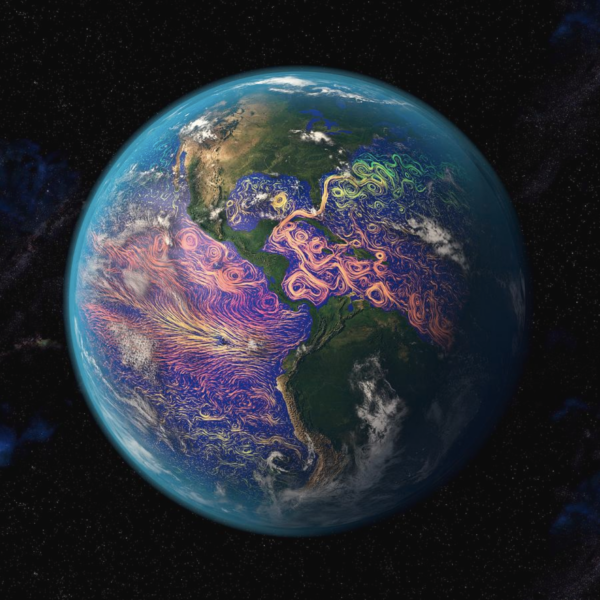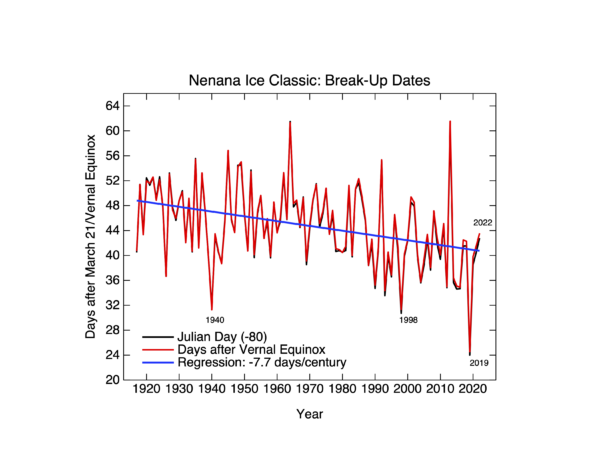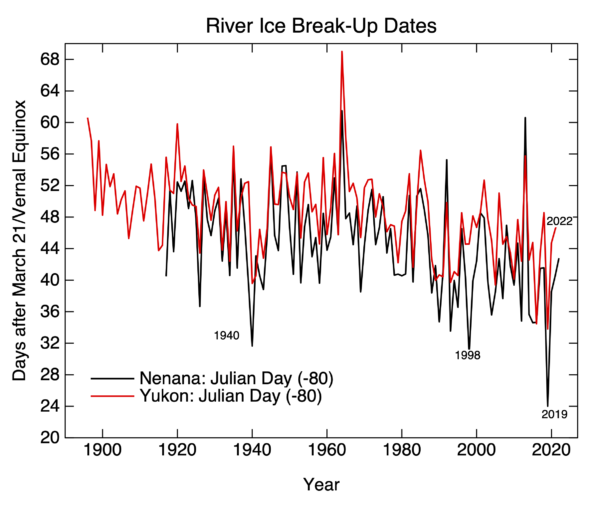This month’s open thread on climate topics. Check out the new State of the Climate in 2021 report from NOAA and BAMS. A blast from the past, though yamal-age may vary…
As always, please stay civil, on topic, and limit comments to one a day.
Climate science from climate scientists...
by group
This month’s open thread on climate topics. Check out the new State of the Climate in 2021 report from NOAA and BAMS. A blast from the past, though yamal-age may vary…
As always, please stay civil, on topic, and limit comments to one a day.
by Gavin
With the signing of the Inflation Reduction Act (IRA) on Tuesday Aug 16, the most significant climate legislation in US federal history (so far) became law.

Despite the odd name (and greatly overused TLA), the IRA contains a huge number of elements, totalling roughly $350 billion of investment, in climate solutions over the next ten years. This is an historic effort though it falls short of the broader ‘Green New Deal‘ goals that were proposed in 2019, and doesn’t include all of the elements that were in the proposed 2021 reconcilliation package (the American Jobs Plan in “Build Back Better“) that ultimately floundered.
[Read more…] about Climate impacts of the #IRAby group
by Gavin
One of our most-read old posts is the step-by-step explanation for why increasing CO2 is a significant problem (The CO2 problem in 6 easy steps). However, that was written in 2007 – 15 years ago! While the basic steps and concepts have not changed, there’s 15 years of more data, updates in some of the details and concepts, and (it turns out) better graphics to accompany the text. And so, here is a mildly updated and referenced version that should be a little more useful.
[Read more…] about The CO2 problem in six easy steps (2022 Update)by group
by group
Some of the authors of a recent commentary on k-scale modeling respond to RealClimate.
[Read more…] about Overselling k-scale? Hmmby Gavin

What’s good (and what’s not quite ready) about plans for ‘k-scale’ climate modeling?
[Read more…] about Mmm-k scale climate modelsby group
This month’s open thread. New commenting rules (as described last month) remain in effect. Basically, be substantive, one comment a day, remain polite.
by group
Sorry for delay posting this month, but we’ve been considering how (or if) to go forward with open threads and comments. Looking at the multitude of constructive comments on the “End of blog comments” thread, it’s clear that many people appreciate the possibility of comments here, but that too often it disappoints by devolving into tedious bickering. There were many theories for why! Without necessarily subscribing to any particular diagnosis (there are many that capture some elements of what happens), we have decided to continue with comments for the time being, but with a few modifications.
To encourage people to post less often, but more substantively, we will limit commenters to one comment a day (so make it count!). Additionally, we will try to enforce a ‘one comment, one point’ rule to avoid people just cramming ten comments into one. Moderation of insulting, abusive, or just tedious comments will continue. Think more ‘Letters to the Editor’ than graffiti on the bathroom wall. This will hopefully also allow for more engagement from the RC scientists.
Back in the day, one of the goals of setting up the ‘Forced Variations’ threads was to segregate the more contentious arguments around solutions into one place, but that seems to have run it’s course. Thus we are going to revert to a single open thread, with a slightly broader climate theme than previously. Comments on generic political arguments or other issues that are not directly tied to climate will still be excluded.
We will let this play out for a couple of months and then reevaluate. Let us know what you think.
So with no further ado, let this month’s open thread begin…
by Gavin
As in previous years, the spring break-up of river ice on the Tanana River at Nenana and the Yukon River at Dawson City in Canada (new! h/t Ed Wiebe), is a great opportunity to highlight phenology that indicates that the planet is in fact reacting to the ongoing global warming. As we’ve done in previous years, the Nenana dates can be plotted and show a clear trend towards earlier break-ups (by about 8 days/century over the whole record, or 13 days/century since 1975).

2022 was on trend, and in 2014, I noted that May 3rd was the most likely date given the trends until then.
Dawson City in the Yukon is about 250 miles east of Nenana which is close enough for the seasonal anomalies in climate to be quite highly correlated. So one might expect that the break-up dates would be similarly correlated… and indeed they are:

The ice at Dawson breaks up on average 3.8 days later than the ice at Nenana (5.1 days this year), but the correlation between the two series is an impressive 0.82. There have been 15 times the ice went out within 24 hours of each other and in 1963 they broke up less than 3 minutes apart! The trends are likewise very similar 7.7±3.8 days/century for Nenana, compared to 6.5±3.1 days/century since 1917. This pretty much puts paid to the occasional claim of the urban heat island in Fairbanks affecting the water and causing the trend.
[Update: I misunderstood the Yukon river break up website, and erroneously stated that the break-up was on May 2nd. It was not. I’ll update this again when it has. Apologies.]
[Update II: The Yukon river ice broke up on May 7, and I’ve updated the graph and text.]
1,389 posts
15 pages
248,810 comments